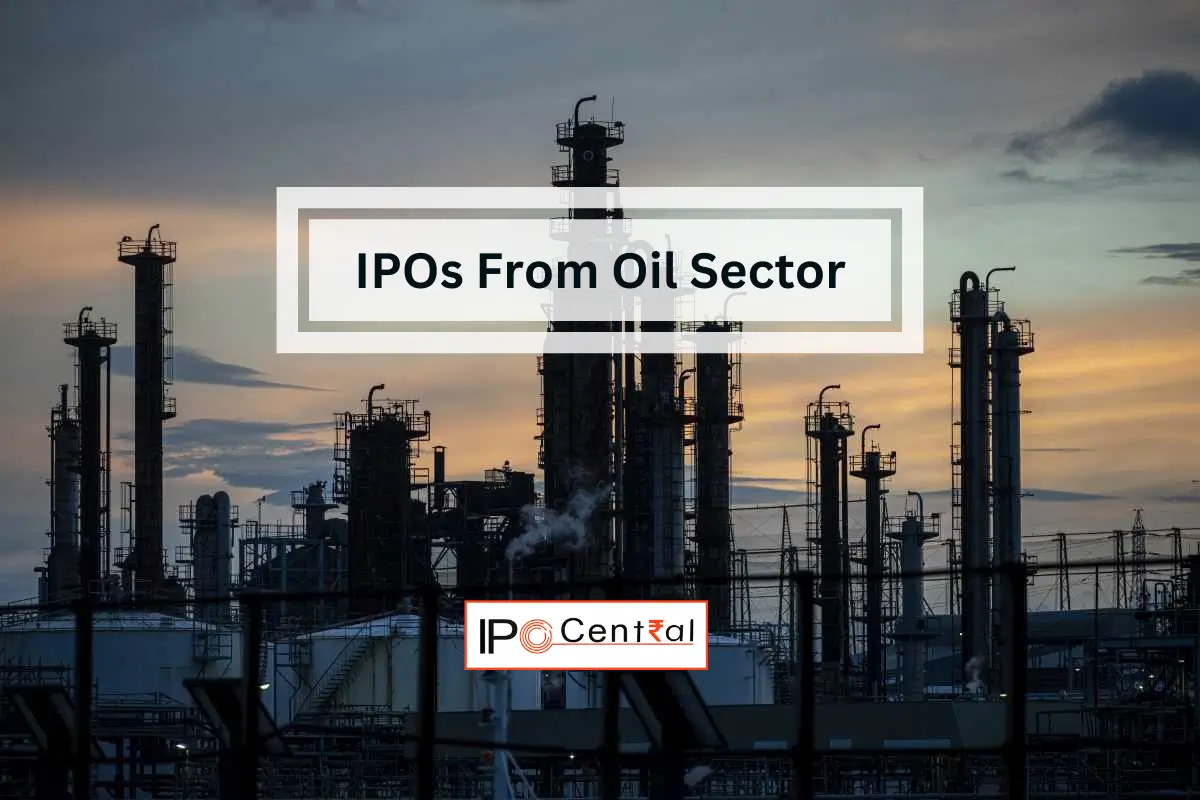The oil industry remains a cornerstone of the global economy, with companies frequently leveraging initial public offerings (IPOs) to secure capital for expansion, exploration, and operational improvements. As energy demand fluctuates and the sector evolves, Oil Sector IPOs present both opportunities and risks for investors seeking exposure to this critical industry.

List of Oil Sector IPOs
Here is the list of oil sector IPOs starting from 2018.
| IPO Name | Listing Date | Listing Returns (%) | Issue Size (INR Cr) |
|---|---|---|---|
| Aegis Vopak Terminals | 6/2/2025 | 2.98 | 2,800.00 |
| Gandhar Oil | 11/30/2023 | 78.34 | 500.69 |
| IRM Energy | 10/26/2023 | -6.31 | 544.36 |
Oil Sector IPOs in Numbers
| Year | No. of IPOs | Capital Raised (INR Cr) |
|---|---|---|
| 2023 | 2 | 1,045.05 |
With platforms like NSE and BSE, facilitating easy access to capital markets, IPOs from the Oil Sector are increasing in numbers. As noted above, this is suitably aided by the high level of industrialization in various sectors.
If you want to check more reports, here are the links:
- All-time Biggest IPOs in India
- All-time Highest IPO Subscription
- Best IPOs by Sector in 2025
- Biggest IPOs by Size in 2025
- Best IPOs in 2025
- Highest IPO Subscription in 2025
- Highest SME IPO Subscription in 2025
- Statewise Mainboard IPOs
- Best SME IPOs by Sector
- Biggest IPOs by Applications
- Best IPOs That Doubled Investors’ Money
Oil Sector IPOs: Market Overview and Industry Segments
The oil sector comprises three primary segments: upstream (exploration and production), midstream (transportation and storage), and downstream (refining and distribution). Companies across these segments periodically go public, offering investors a chance to participate in the oil and gas market.
Market conditions, including crude oil prices, government policies, and geopolitical events, significantly impact the timing and success of Oil Sector IPOs. High oil prices generally spur investor confidence, while price declines may lead to cautious sentiment. Additionally, the global transition toward renewable energy adds another layer of complexity to IPO valuations and investor interest.
Notable Players in Oil Sector IPOs
Over the years, several prominent oil companies have launched IPOs, spanning different segments of the industry. Some specialize in exploration and production (E&P), while others focus on refining, pipeline infrastructure, or distribution. State-owned enterprises in oil-rich nations frequently undertake IPOs to raise capital while maintaining government oversight. Recent Oil Sector IPOs have demonstrated varying success, influenced by market trends, economic conditions, and investor appetite for energy stocks.
Key Factors Impacting Oil Sector IPOs
A range of economic, regulatory, and geopolitical factors influence the performance and attractiveness of Oil Sector IPOs:
1. Crude Oil Price Volatility
The valuation of oil companies is directly linked to crude oil prices. A bullish market attracts investor confidence, while price slumps can dampen enthusiasm for new public offerings.
2. Regulatory and Environmental Policies
Stringent environmental regulations and government policies on oil exploration, drilling, and emissions affect IPO prospects. Companies must align with evolving sustainability standards to maintain investor interest.
3. Geopolitical Stability and Trade Policies
Oil-producing nations often face political and economic challenges. Conflicts, trade restrictions, or international sanctions can significantly impact investor sentiment and IPO performance.
4. Broader Market Sentiment and Economic Conditions
The overall state of the stock market influences investor confidence in Oil Sector IPOs. During periods of economic uncertainty, IPO activity may slow, while bullish market conditions can drive stronger demand.
5. Energy Transition and Sustainability Trends
With global efforts toward renewable energy, investors are increasingly evaluating oil companies based on their sustainability strategies and long-term adaptability to cleaner energy solutions.
Pros and Cons of Investing in Oil Sector IPOs
Advantages:
- Exposure to a Critical Industry: The oil sector remains fundamental to the global economy, making IPOs a key entry point for investors.
- Potential for High Returns: Companies with strong reserves, efficient operations, and favorable market conditions can generate substantial investor gains.
- Attractive Dividends: Many oil firms provide consistent dividend payouts, offering long-term financial benefits to shareholders.
Challenges:
- Industry Cyclicality: Oil prices fluctuate, affecting profitability and stock performance.
- Regulatory and Environmental Risks: Increasingly stringent environmental policies may impact growth prospects.
- Market Volatility: Economic downturns, geopolitical instability, and shifts in energy demand can create unpredictable investment conditions.
Future Outlook for Oil Sector IPOs
Despite growing interest in renewable energy, oil remains a crucial component of global energy consumption, particularly in emerging markets. Companies that integrate sustainability initiatives while maintaining profitability may attract substantial investor interest. Additionally, hybrid energy firms that incorporate both fossil fuels and renewables may shape the future of Oil Sector IPOs.
Conclusion
Oil Sector IPOs provide investors with a strategic entry into the energy market, but they come with inherent risks tied to commodity prices, regulatory policies, and geopolitical factors. As the industry navigates its next phase, investors should conduct thorough due diligence, assess company fundamentals, and monitor market conditions before investing. With the sector’s evolving dynamics, Oil Sector IPOs will continue to be a focal point for investors seeking exposure to the global energy industry.






































